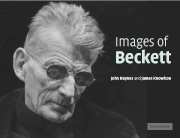A portrait of Beckett
Published online by Cambridge University Press: 05 August 2012
Summary
Samuel Beckett was undoubtedly one of the ‘stars’ of twentieth-century literature and theatre. After more than two decades of obscurity, he became equally famous in both French and English, translating himself regularly from one language into the other. His four major plays, Waiting for Godot and Endgame (first written in French), Krapp's Last Tape and Happy Days (first written in English) and his novel trilogy, Molloy, Malone Dies and The Unnamable (first written in French), with their translations into dozens of languages, made him a key figure on the world literary stage. He was awarded several prestigious international awards, the most distinguished of which were the International Publishers' Prize in 1961 (shared with Jorge Luis Borges) and the Nobel Prize for Literature in 1969. Few writers have been more celebrated during their lifetime; yet he disliked the trappings of fame. His craggy, deeply furrowed face became instantly recognisable; yet he hated to be recognised. He loathed all forms of self-exposure or self-promotion and gave a polite but firm ‘no’ whenever he was asked to give an interview or to speak in public or on the radio and television. As a result, he retained an exceptional air of mystery and myths naturally accrued around him. Many persisted long after his death.
The first and most natural of these myths was that he was a latter-day hermit, living a reclusive existence in his seventh-floor apartment on the boulevard Saint-Jacques in Paris. He certainly loved silence, solitude and peace.
- Type
- Chapter
- Information
- Images of Beckett , pp. 1 - 42Publisher: Cambridge University PressPrint publication year: 2003



